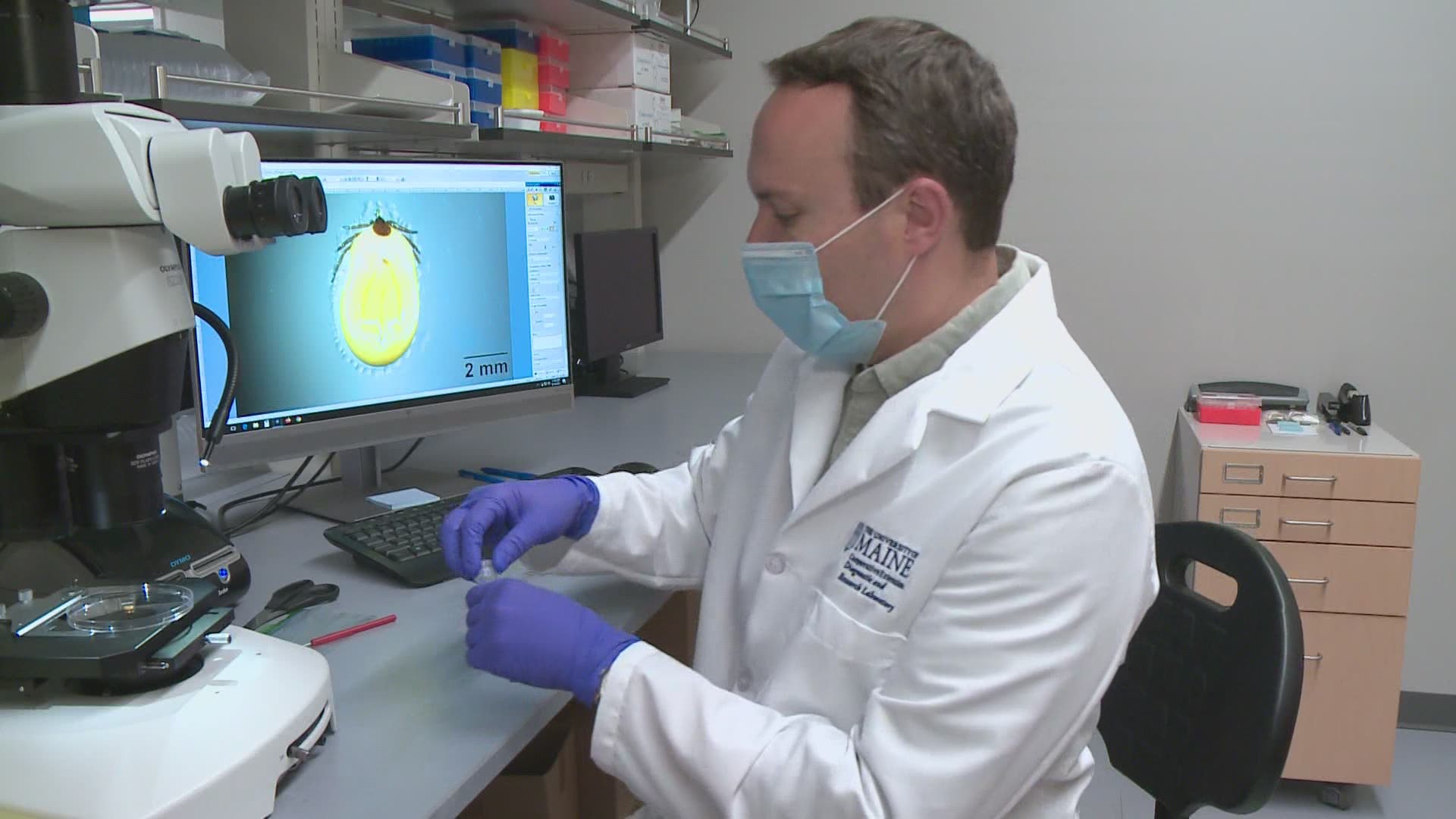ORONO, Maine — If you are spending time outdoors this summer, there's a good chance you could pick up a tick that may be carrying diseases. If the tick is embedded, it's important to identify the species and what diseases it may be carrying.
That's why researchers at the University of Maine Cooperative Extension Tick Lab in Orono, also known as the Maine Tick Lab, are reminding people to send in ticks for testing. Researchers will identify the tick and test it for pathogens that cause tick-borne illnesses.
Griffin Dill manages the the lab, and things get busy after the mail arrives. He says samples can be mailed in a sealed plastic baggie or in vial containing alcohol, but never in bleach or acetone. Ticks have arrived in other ways too.
"Samples soaked in gin, in tequila, hand sanitizer, you name it," Dill said.
Maine has 15 different species of ticks. The lab receives 15 to 100 samples a day. The majority are American dog or wood ticks and deer ticks.
Dog ticks are larger than deer ticks and they also have a white or beige marking on their backs. Deer ticks are a darker color with black legs. Occasionally the lab will receive a lone star tick, which has a distinct white spot. That species is not fully established in Maine but it is one to watch out for. Exposure in some cases can cause meal allergies. Dill takes pictures and assigns each sample a number. Researchers prefer a whole or mostly intact sample.
"Just a leg or just a tiny piece of the body generally is not going to give us good information whether that tick is infected or not," Dill said.
Then the samples, which are in vials, are pulverized in a special machine and then spun in a centrifuge.
With the help of University of Maine student researchers, the tick samples are broken down even more in a special solution and stored overnight. Then their genetic material is analyzed. Tom Rounsville is a molecular biologist who oversees the DNA lab.
"We look for the genetic signatures for the disease causing organisms of that particular panel we are going to be running it for," Rounsville said.
Rounsville says ticks can carry and transmit several diseases at the same time. DNA material from deer ticks is tested for the bacteria that causes Lyme, as well as Anaplasmosis and Babesiosis -- two common coinfections. Dog ticks are also tested because they can carry pathogens that cause Rocky Mountain Spotted fever and other illnesses.
"While these aren't diseases associated in Maine at the moment, they are found in states nearby," Rounsville added.
So far this year the tick lab has received more than 1,200 tick samples, and nearly 38% tested positive for Lyme. People sending in ticks can also complete a survey, which gives researchers more of the data they need, like where the tick encounter took place and what activity people were doing when it happened. For information on submitting a tick sample to the Maine Tick Lab, click here.
For real time tracking information on reported cases of Lyme disease and other illnesses from the Maine CDC, click here.

